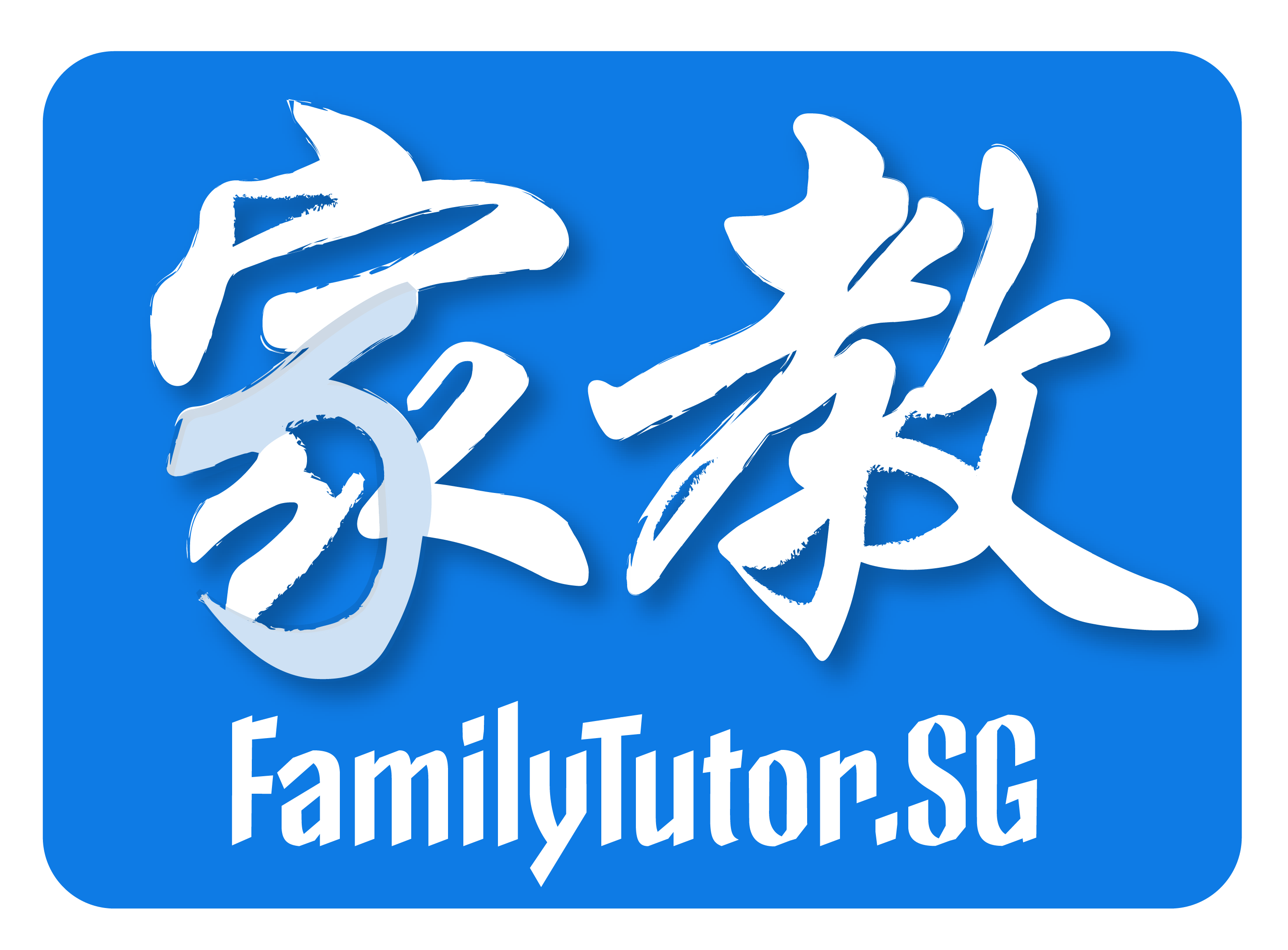
The Four Most Popular Study Strategies You Can Adopt

Growing up in academic-centric Singapore means that many of us from a young age have been exposed to a variety of study methods, be it from our school teachers or private tutors. A majority of these strategies are built from the base principles of the study cycle, which is a 5-step approach to learning.
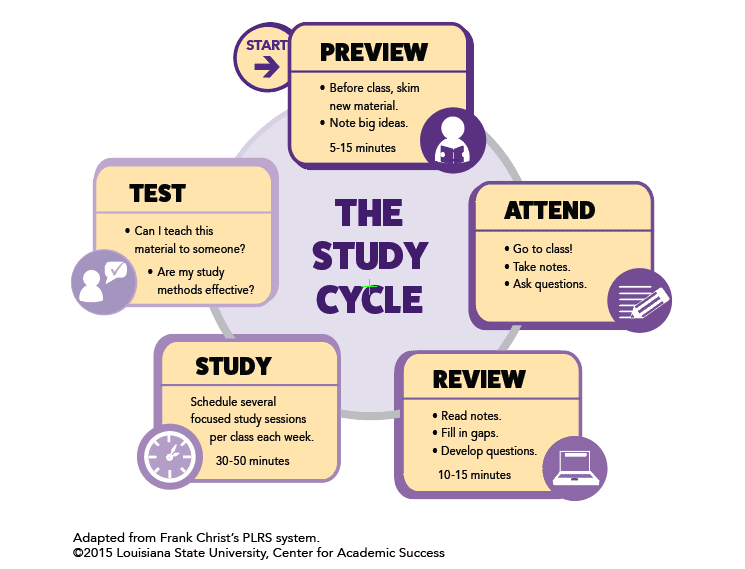
Source: Louisiana State University
This broad methodology emphasises proactiveness in learning, active recall and big-picture understanding. What then, are the specific study strategies that can be used to supplement this holistic study cycle?
Strategy #1: The SQ3R Method
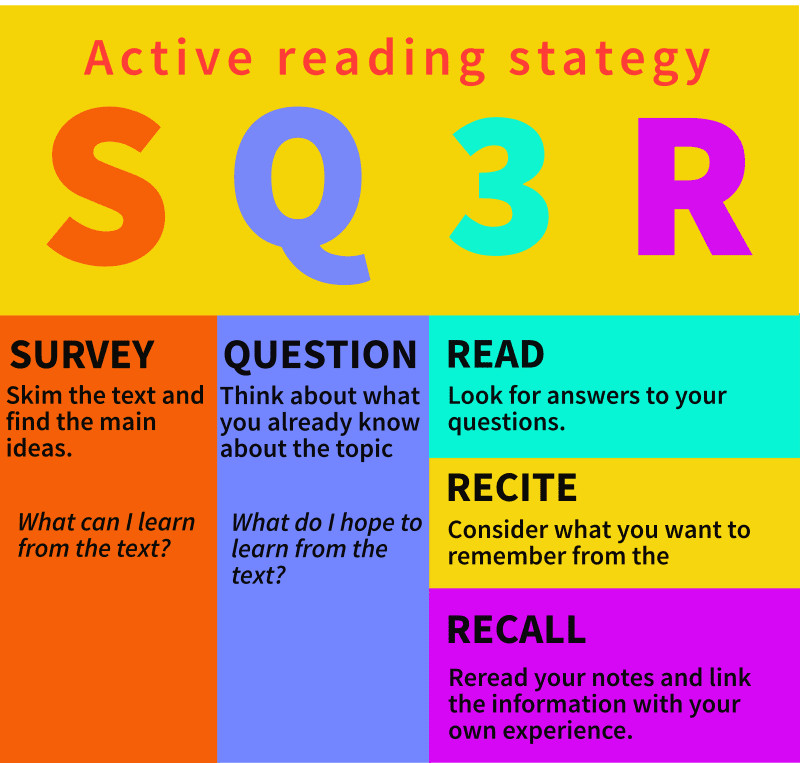
Source: Metodes.LV
Though its name may sound intimidating, the base method of SQ3R strategy is actually the most similar to the study cycle. It’s name stands for: Survey, Question, Read, Recite and Review. Following its general structure below promotes big-picture understanding since from the start there is the pinpointing of your study topic’s main ideas. Furthermore, active recall is achieved through the step Recite, meaning you are more likely to retain the information long-term. This means no more “in one ear, and out the other” issues!
- Survey – Skim through the chapter/topic’s notes and identify the main ideas. These ideas can usually be found in the subheadings, bold print or even the topic sentences, which are generally the first sentence of each paragraph.
- Question – Identify any gaps in knowledge you may have. Question what do you not know!
- Read – Fully read through the text and try and answer the questions you have in mind. You should also understand the important information under the main ideas.
- Recite – Recall your questions and see if you are able to understand them from memory. Think of this as ‘digesting’ the information you just read, breaking down the main ideas of the text to better absorb them.
- Review – Reread the entire text or your notes for it and see if you can identify any new links or points of interest. This is the step that can add extra depth to your learning as it contributes to your understanding of the text’s big idea.
Strategy #2: Mindmapping
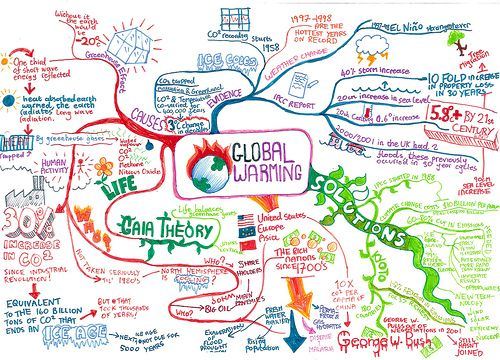
Source: Pinterest
Mindmapping has by far been my favourite study strategy since I first learnt it from my private tutor in Secondary School. If you are a visual learner like me, mindmapping is a creative and engaging way to organise your main ideas and learning points. Versus the usual lines after lines of notes, mindmapping is a great way to visualise a concept’s main points quickly. This is very useful for examinations, as instead of thinking back to your lengthy textbook or pages and pages of notes for the answer, you can visualise your overarching mindmap and spot the key points you need for the examination question. In a nutshell, mindmapping makes memorisation and recall of points easier and quicker.
Another great way to amplify mindmaps would be to colour-code them the information in them. For me, my mindmap habits over the years have been to use a red colour for definitions, green for examples, blue for explanations and pink for any ‘extra’ information that is good to know. A common misconception about mindmaps is that it is only used for humanities subjects but that is false! Mindmaps are highly adaptable and can be used in practically any subject or scenario, such as even science subjects or even just planning out your essay. Of course, you can choose to draw out your mindmaps or instead use an online tool such as Simplemind.
An extra tip would be to use mindmaps as a way to link ideas within or between topics. This is particularly useful for older students taking ‘A’ levels or IB as there is often emphasis on such connections and big idea understandings. Below is an example of how I adapted the mindmap structure to draw out the big connections between IB Geography topics to gain a deeper understanding of the syllabus and how questions could combine topics.
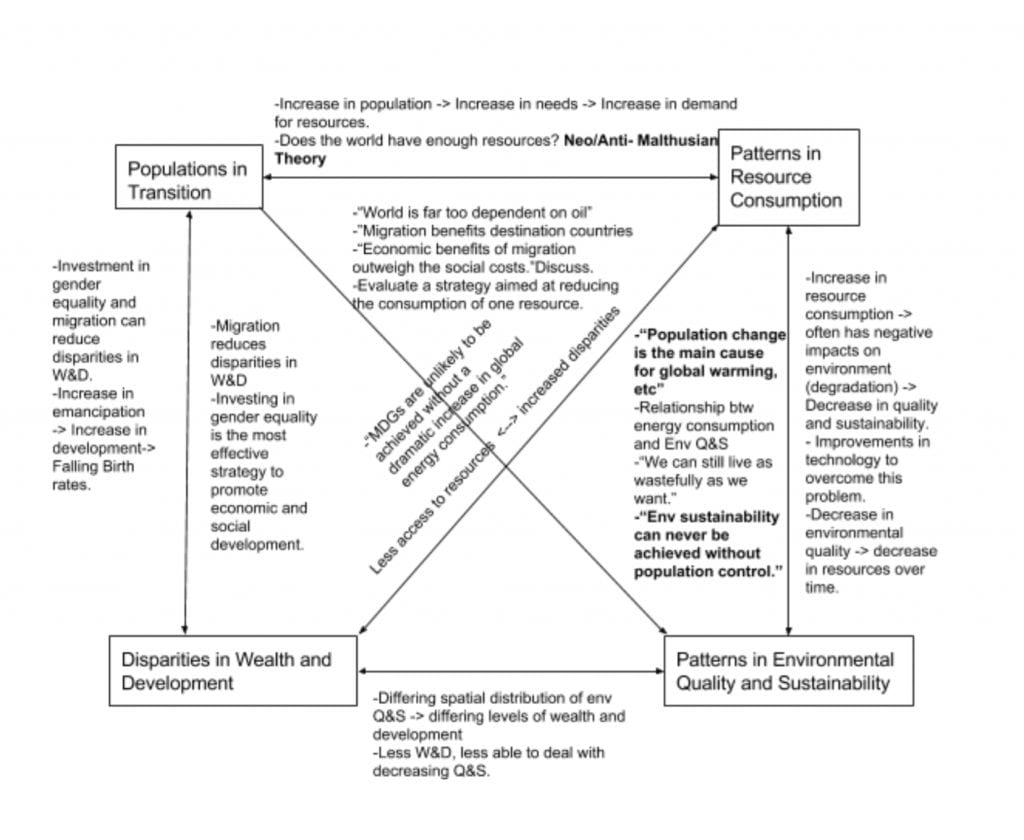
Strategy #3: Kanban

Source: Simpatico Design Studio
Kanban is a way of managing your work process, organizing tasks in a way that can aid in improving your workflow and overview of what work you have to complete. Its base Kanban board uses the general categories (put into columns) of To-do, Doing and Done, with additional categories such as Backlog (future tasks to complete), Feedback, or To Review are often added. Such Kanban boards can be drawn out on whiteboards, constructed out of post-its, or even created digitally! My favorite Kanban tool is called Trello and it has various productive and aesthetic functions that add to the Kanban experience.
Kanban’s advantage is in its flexibility and ease of use. Definitely, it can be used for both study content as well as overall task/group project management. Personally, I use Kanban to organize my study flow for more complex subjects that involve a large number of mini tasks to clear, from the actual academic content to complete, to multiple assignments to clear. As a private tutor myself, I also enjoy using Kanban to track the work assigned and content covered for each student, giving the 1-to-1 home tuition a more holistic overview and flow. Do check out FamilyTutor, a private tuition agency in Singapore, that provides such holistic and quality private tuition.
Strategy #4: The Rule of Three
If such strategies seem a bit daunting and intimidating to you, try out this casual ‘Rule of Three’! This simply refers to breaking down anything you study into three main points or overarching ideas. For instance, if I am studying Tropical Cyclones in Geography, I would categorize it into Formation (the technical process behind its formation), Impacts (the various social, economic, and environmental impacts of a tsunami) and responses (ways to mitigate the impacts of tropical cyclones). This choice of three is based on the ‘Rule of Three’, a writing principle that dictates a trio of statements, events, or facts that are more memorable, effective, or striking. This method is a good way to organize the topic post-study, making things easier for the Recite stage of the study cycle. Another advantage in tests and examinations, most essay questions would require three points, and the rule of three would already provide you with your essay structure in this sense.
With so many study strategies out there, it’s easy for one to pick a few strategies to try out, and eventually find the best one for you! This ideal strategy can also carry across all your work, and stick with you for years, so don’t worry about ‘wasting’ time trying out so many strategies as it pays off in the long run.

Maddy
Maddy is an humanities undergraduate student and is passionate about learning and education, having been both a student and teacher herself. She hopes to impart practical advice and light hearted reflections around school life and studying, that can help you learn and grow in your education journey as well!
Tell Maddy Below What You Think About Her Post!
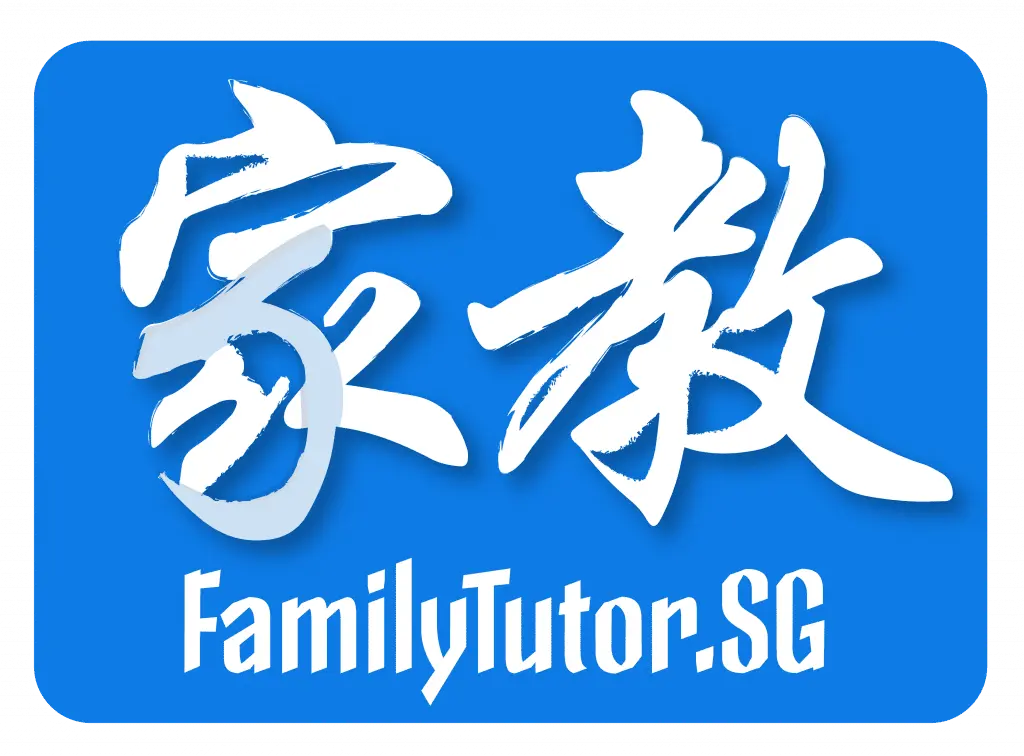
About FamilyTutor!
FamilyTutor is an established home tuition agency in Singapore! We match suitable home tutors for our clients not just to improve the students' academic grades, but also to build a strong rapport and meaningful relationship with the students and even the their whole family. FamilyTutor put every student in good hands!
If you need an excellent home tutor, feel free to call/WhatsApp us at +65 8777-2168! Our matching service is free!
Related Posts!
Follow Us On Facebook!
Education Levels
National Exams
Math & Science Subjects
Language Subjects
Japanese Tuition
Korean Tuition
German Tuition
Humanities Subjects
Social Studies
Chinese Literature Tuition
About Us
FamilyTutor is an established and the people’s favourite home tuition agency in Singapore! We match a suitable tutor for you not just to improve the student’s grade, but also to build a good rapport and meaningful relationship with the student and even with the student’s whole family! With FamilyTutor, every Singaporean son & daughter is in good hands.
Contact Us
- 8777 2168
- 8777 2168
- Mon-Sun 9am-10pm (Including PH)
- contactus@familytutor.sg
- 17 Petir Road Singapore 678278
